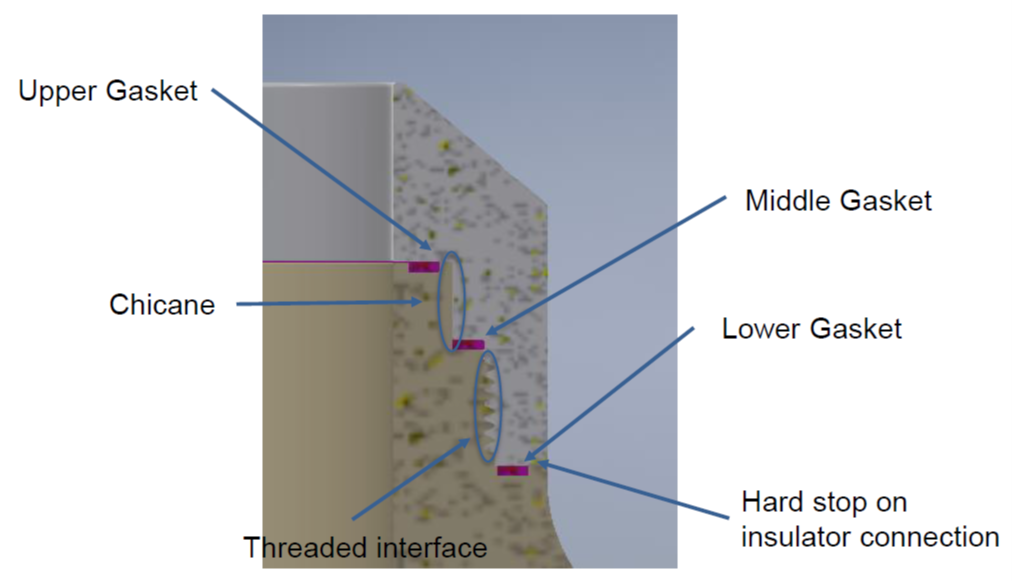High voltage applications utilize insulator materials that can handle mechanical stresses as well as high intermittent heat loads. Combining materials, segmenting them in a device, can take advantage of differing material properties for higher tolerances and an overall better performance.
The approach is to build a high voltage insulator consisting of two materials: Poly-Ether-Ether-Ketone (“PEEK”) and Machinable Ceramic (“MACOR”). PEEK has a high stress tolerance but cannot withstand high temperatures, while MACOR has high heat tolerance but is difficult to machine and can be brittle. MACOR is used for the plasma-facing surface, while PEEK will handle the stresses and high voltages. This approach also uses a precision-machined threaded insulator design with gaskets and grease to seal the parts.
- Allows mating two unlike materials to take advantage of differing physical properties
- Does not require epoxy that can trap gas in the parts, require curing, and may need additional pieces to align the parts
- The thread and gasket designs make the track length across the material long enough for the failure modes to arc through the material
- High-voltage insulators with plasma facing components (e.g., Dense Plasma Focus, Z-machine)
- Plasma rail-gun construction
Current stage of technology development: TRL 3 (Analytical and experimental critical function and characteristic proof of concept)
LLNL has filed for patent protection on this invention.
U.S. Patent Application Publication No. 2021/0327615 HIGH-VOLTAGE INSULATORS HAVING MULTIPLE MATERIALS, published 10/21/2021 (https://image-ppubs.uspto.gov/dirsearch-public/print/downloadPdf/20210327615)
U.S. Patent No. 10,978,225 High-Voltage Insulator Having Multiple Materials, issued 04/13/2021 (https://image-ppubs.uspto.gov/dirsearch-public/print/downloadPdf/10978225)


